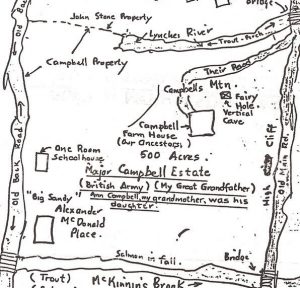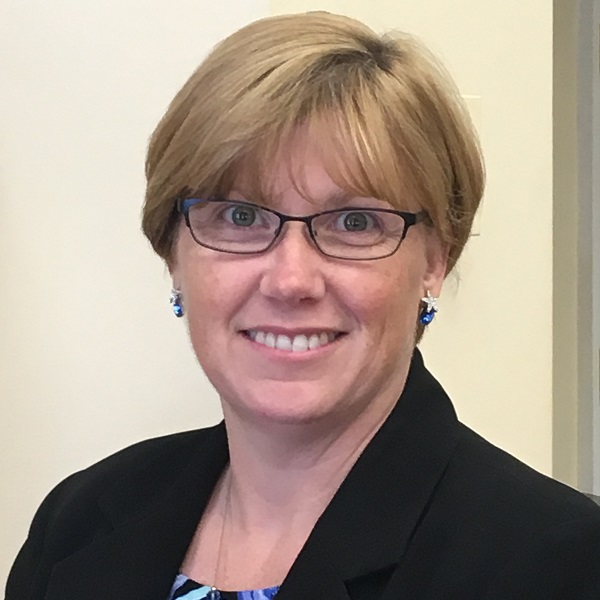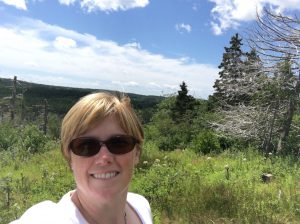According to Merriam-Webster’s Encyclopedia of Literature, a tall tale is a “narrative that depicts the extravagantly exaggerated wild adventures of North American [sic] folk heroes.”[1] The more the tales are told, the larger they become. Characters and events were usually based on something real. Genealogy and tall tales can be intermingled. The tales are also important maturing rites of passage, marking the transition from being the listener to being the storyteller.
Long before genealogists were writing Register reports on their word processors, storytelling was a way to capture and pass down information to younger generations. Through storytelling, the stories capture the larger-than-life events of the past: sometimes, with some magical or astonishing twist.
Long before genealogists were writing Register reports on their word processors, storytelling was a way to capture and pass down information to younger generations.
In my family, there was an enchanting tall tale of an ancestor who was given the gift of music from the Fairies. The McPherson family has been sharing the story of my great-great-great-great-grandfather, and his encounter with magical fairies, for several generations. My aunt has fond memories of her grandfather telling her about musical fairies from a magical place called Cape Breton. As a child, I remember my grandmother’s cousins sharing the story when they spoke about their Scottish heritage. When I started to research my grandmother’s family, the details of this magical tale came to life.
My grandmother was a McPherson, and her grandfather was Colin William McPherson (1863–1915). He was born in Richmond County, Cape Breton,[2] and moved to Boston in 1884.[3] Colin was the son of William Colin McPherson (1821–post 1901) and Ann Campbell (1826–ante 1891).[4] His mother was the daughter of Donald Campbell (1792–1878) and Catherine MacDonald (d. post 1901).[5] The McPherson and Campbell families lived at Lynche’s River, Cape Breton, near the canal at St. Peter’s on Bras d’Or Lake.
Generations of talented Campbell descendants have continued to entertain the people of Cape Breton and Nova Scotia with their music.
Donald Campbell was a famous Cape Breton fiddler during the mid-nineteenth century.[6] Generations of talented Campbell descendants have continued to entertain the people of Cape Breton and Nova Scotia with their music. In Cape Breton, the story of Donald Campbell and the magical fairies is legendary. His story has been written about in many books, magazines, and journals from the area.[7] In my opinion, the best rendition of the tale of Donald Campbell was in a song written and sung by David Stone, a dear friend and a cousin-of-a-cousin. His song, “Donald Campbell’s Faerie Bow,” captured all of the magical elements of my great-great-great-great-grandfather’s life.[8]
Donald Campbell was born in Argyllshire, Scotland[9] circa 1792[10] and died at Lynche’s River on 28 April 1878.[11] He was the son of John and Catherine (____) Campbell.[12] John Campbell was a private who served under General McLean in the Argyll Highlanders during the Revolutionary War; he was later granted land on Cape Breton for his service.[13]
After the War, the Campbell family settled on a parcel of land on Bras d’Or Lake.[14] The legend states that when Donald Campbell was a child, he was “abducted” by Fairies and given the gift of music through his special bow.[15] The family’s version of the tale was that Donald Campbell fell down the Fairy Hole and was rescued by the Fairies, who gave him the gift of music.[16] When he played, Donald Campbell would tune his bow in a unique way, which gave him a very distinctive sound.[17]
According to the histories, on the afternoon of the day that Donald Campbell died he was playing his fiddle. When the music stopped, they went to check on him and found him dead in his chair.[18]
 Map drawn by William A. McPherson, Sr., in 1977. Courtesy of Kathleen Kaldis and the McPherson family.
Map drawn by William A. McPherson, Sr., in 1977. Courtesy of Kathleen Kaldis and the McPherson family.
Historians have questioned whether the story took place in Scotland or Cape Breton, but the Fairy Hole was listed on many maps of the Cape Breton area over the years, including this one by my great-great-uncle, William A. McPherson, Sr. (1977).[19]
In the summer of 2017, I had the opportunity to visit Cape Breton on a genealogical pilgrimage. It was a fantastic experience I will never forget. On a hot and humid day, the wonderful couple who now own the home that William Colin McPherson and Ann Campbell lived in treated me to a wonderful and special hike up Campbell Mountain.
Campbell Mountain was the location of the John Campbell homestead, and it was abandoned many decades ago. The house was long gone, and all that remained were overgrown woods. One of the places I had hoped to get to was the Fairy Hole, but the area was not safely accessible. Maybe, someday, my descendants might share stories of their larger-than-life genealogist ancestor, who tried to visit the Donald Campbell Fairy Hole.
Think about of some of the stories you heard about your ancestors when you were a child. Would any of those stories meet the definition of a tall tale? Have you ever shared those stories with some of the younger members of your family?
Notes
[1] Merriam-Webster’s Encyclopedia of Literature (Springfield, Mass.: Merriam-Webster, Incorporated, Publishers, 1994), 1090.
[2] Nova Scotia, Canada; Antigonish Catholic baptisms, marriages, and burials, 1823–1905 (1864), baptisms, entry for William Colin McPherson; online database with images, Ancestry (www.ancestry.com: accessed 27 December 2017); also citing Catholic Diocese of Antigonish, FHL# 4,113,984; Nova Scotia, Canada.
[3] Massachusetts, “State and Federal Naturalization Records, 1798–1950,” online database with images, Ancestry (www.ancestry.com: accessed 27 December 2017), entry for Colin W. McPherson of Cape Breton, Nova Scotia, Canada, 1896; also citing Records of the Immigration and Naturalization Service, 1787–2004; record group number 85, National Archives at Boston, Massachusetts.
[4] See Note 2.
[5] Ibid.
[6] Arthur J. Stone, Journey Through a Cape Breton County, Pioneer Roads in Richmond County (Sydney, Nova Scotia: University College of Cape Breton Press, 1991), 76–78, 142–44; P. J. MacKenzie Campbell, Highland Community on the Bras d’Or (Antigonish, Nova Scotia: Casket Printing and Publishing Co., LTD, 1978).
[7] Allister MacGillivray, “The Cape Breton Fiddler,” Cape Breton Magazine 29 [August 1981]: 35–49; online images, Cape Breton Magazine (www.capebretonmagazine.com: accessed 14 September 2009).
[8] David Stone, “Donald Campbell’s Faerie Bow,” Tickets Tracks Tales, Put it On CD, 2016.
[9] Ibid.
[10] 1871 Census of Canada, Richmond, Nova Scotia, population schedule, Nova Scotia, Richmond district 206, Sub District (SD) St. Peter, polling district 4, p. 33 (penned), dwelling 108, family 109, Donald Campbell household; digital image, Ancestry.com (http://www.ancestry.com: accessed 28 December 2017), citing LAC microfilm publication Census of Canada, 1871, RG31 roll C-10570; Stone, Journey Through a Cape Breton County, 76–78.
[11] Campbell, Highland Community on the Bras d’Or.
[12] Stone, Journey Through a Cape Breton County, 76–78, 142–44.
[13] Ibid.
[14] Ibid.
[15] According to the story passed down through the family, Donald Campbell was rescued by the Fairies. However, the story from the accounts from Cape Breton state that Donald Campbell was “abducted” by Fairies. The article will use the versions from the documented versions of the story.
[16] Recollections from Kathleen A. Kaldis and other family members.
[17] David Stone, “Donald Campbell’s Faerie Bow,” Tickets Tracks Tales, Put it On CD, 2016.
[18] Stone, Journey Through a Cape Breton County, 76–78, 142–44.
[19] Map of the Campbell Estate, Lynche’s River, Richmond County, Nova Scotia, 1977, hand drawn by William A. McPherson.
Share this:

About Kathleen Kaldis
Kathleen is a full time researcher in the Research Services Department, and holds a certificate from the Boston University Genealogical Research program. She is a member in the National Society Daughters of the American Revolution, in the Lexington Massachusetts Chapter. During her tenure as Chapter Registrar, she volunteered her time actively researching lineages, gathering proof, and doing whatever it took to complete prospective member’s applications. Through her efforts and research contributions, the Lexington Chapter gained over a hundred members in three years. In 2013 and 2016, she was the Massachusetts Daughters of the American Revolution, Outstanding Volunteer Genealogist of the Year.View all posts by Kathleen Kaldis →
